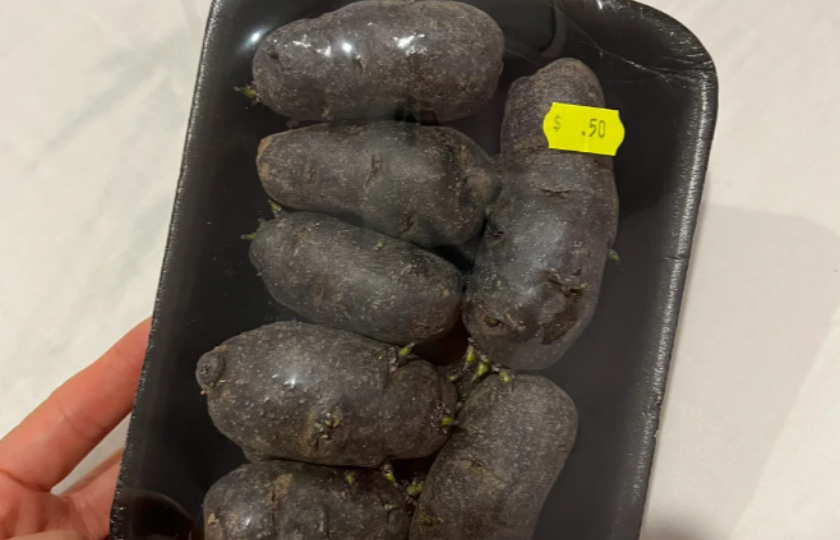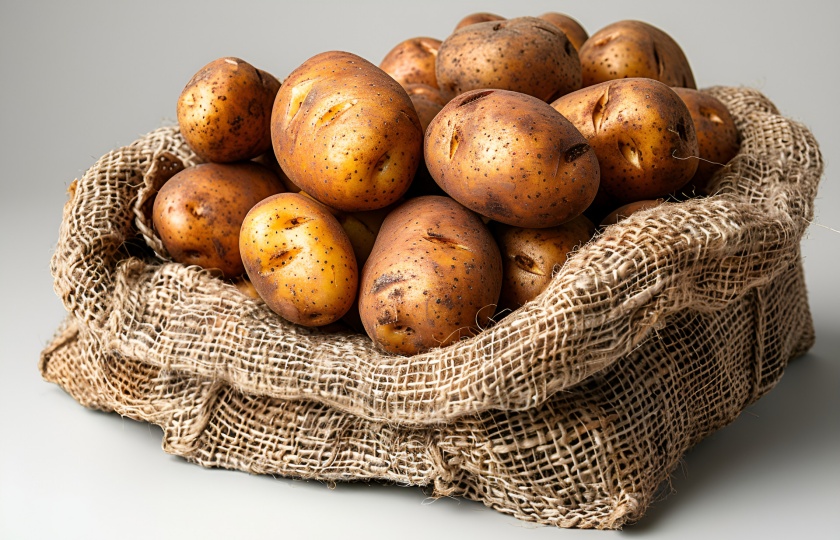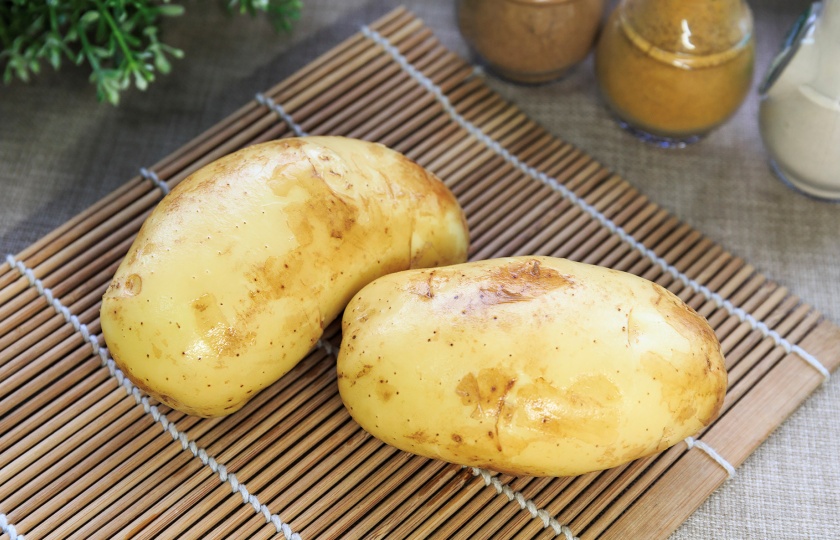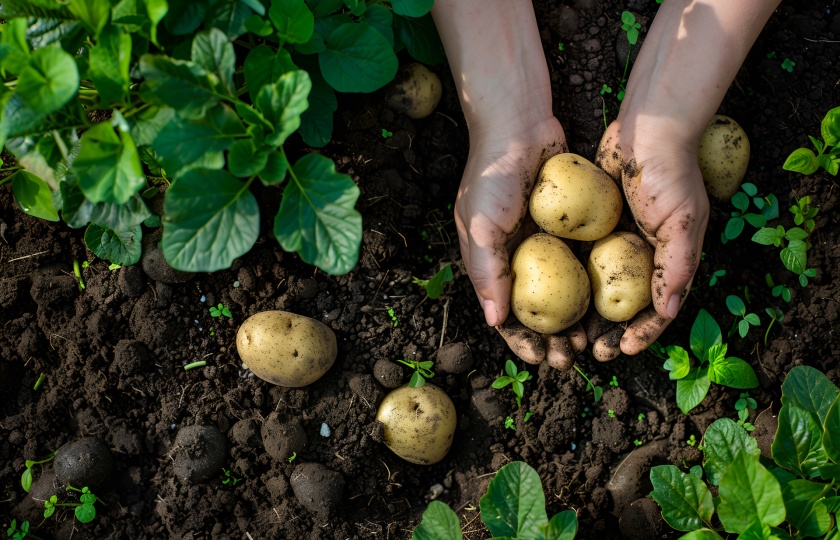Wondering if your purple potato has gone bad? Here’s how to tell

Be vigilant if you have potatoes at home. The following signs indicate that your potatoes have gone bad!
Six ways to tell if purple potatoes have gone bad
Soft and mushy
Under normal circumstances, fresh purple potatoes feel very hard. If they feel very soft and mushy, then it means that the potatoes have gone bad. It is best not to eat or buy them anymore.
Wrinkled skin with black spots
The skin of fresh and high-quality purple potatoes should be very tight and the color is evenly distributed. If the purple potatoes you buy have wrinkled skin and black spots on them, it means that these purple potatoes have already gone bad or are about to go bad. It is not recommended to eat them anymore.
Obvious signs of mold
The skin of fresh purple potatoes is smooth. If there are obvious molds, it means that they have gone bad and are not recommended to be eaten anymore. As pointed out by the United States Department of Agriculture (USDA), molds may make you sick. And you can't just cut it off - there may still be invisible spores growing in other parts of the purple potato. It is best to throw it away directly.
Smells bad
Fresh raw purple potatoes should have a fresh earthy smell. If your purple potatoes have a pungent or obvious bad smell, then it means that the inside of the purple potatoes has begun to rot or mold and cannot be eaten anymore.
It is purple
Purple potatoes are a variety of potatoes, but their skins are purple and contain a large amount of anthocyanin substances. If the potatoes are black or green, then it is not recommended to eat them anymore. According to research by the University of Idaho, when purple potatoes turn green, solanine usually increases. This compound may be harmful if consumed in large amounts.
Sprouted
Sprouted purple potatoes are not recommended to be eaten. When purple potatoes sprout, the content of their glycoside alkaloid compounds will increase. Eating too much glycoside alkaloid can cause abdominal pain and even vomiting and diarrhea. The National Poison Center recommends throwing away sprouted potatoes.
Are Potatoes With Purple Spots Still Safe To Eat?
Whether potatoes with purple spots can be eaten depends on the actual situation.
Generally speaking, if it is a purple potato, then its color is purple in itself. So having purple spots is normal and can be eaten. But if ordinary potatoes have purple spots, then specific analysis is needed according to specific circumstances.
If an ordinary potato is affected by non-natural factors during growth, such as being knocked. In this case, as long as a little more of the purple spot part is cut off and the potato flesh inside looks normal without discoloration, bad smell, or softening, then it can still be eaten.
But if the purple spots are formed by mold or microorganisms, then it is not recommended to eat them anymore, otherwise it may increase the burden on the human gastrointestinal tract.
What happens if you eat bad potatoes?
If you eat bad potatoes, the following symptoms may occur.
Food poisoning
If you eat sprouted potatoes, then they contain a large amount of solanine substances. These substances are somewhat toxic. After eating them, they may stimulate the gastrointestinal mucosa and affect the human central nervous system. It may cause numbness of the lips and tongue, itching of the throat, a burning sensation in the upper abdomen, nausea, vomiting, abdominal pain, diarrhea and other food poisoning symptoms, often accompanied by dizziness, tinnitus, and dilated pupils.

Acute gastroenteritis
If you eat spoiled potatoes, then they contain certain bacteria and microorganisms, which are easy to stimulate the human gastrointestinal tract and lead to acute gastroenteritis, causing discomfort symptoms such as abdominal pain, diarrhea, and vomiting in the body, and causing harm to human health.
How To Store Potatoes So They Stay Fresh Longer?
The following storage tips can extend the shelf life of potatoes:
Keep potatoes dry
When storing potatoes, they must be kept dry. Moisture can easily cause potatoes to rot or sprout.
Be careful not to wash newly bought potatoes directly and then store them. It is best to wash them just before use.
If there is dirt on the surface of the potatoes, you can wipe it clean with a dry cloth, but do not wash it with water.

Choose a cool and ventilated place
The best storage environment for potatoes is a cool, dry and well-ventilated place. The ideal temperature is between 4°C and 10°C. If the temperature is too high, potatoes will sprout quickly; if the temperature is too low (such as in a refrigerator), the starch in potatoes will be converted into sugar, resulting in a sweeter taste and poorer texture of potatoes.
Avoid direct sunlight
Sunlight can promote potato sprouting and cause the production of green spots. This will not only affect the taste but also may trigger solanine (a natural toxin), which is unfavorable to health.
Use paper bags, mesh bags or breathable containers
Breathability is very important for potato storage. Avoid using airtight plastic bags as they can easily accumulate moisture and cause potatoes to spoil.
The best choice is to use paper bags, mesh bags or storage boxes with ventilation holes to allow potatoes to breathe and reduce moisture and mold growth.
Store different kinds of potatoes separately
Different varieties of potatoes have different storage times and storage conditions. Therefore, it is best to store them separately to avoid affecting each other's freshness.
Check potatoes regularly
Stored potatoes should be checked regularly and potatoes that are rotten, sprouted or discolored should be removed in time. Rotten potatoes will affect the freshness of other potatoes and even cause the deterioration of the entire batch of potatoes.
How can you tell if potatoes have sprouted?
You can use the following methods to observe whether potatoes have sprouted:
Observe the appearance: potatoes that are about to sprout will have green spots on the surface, the buds will become larger and have bud marks, or the potato skin will be wrinkled.
Touch and feel: Gently touch the surface of the potato with your hand. If there are small bumps, it means that young sprouts may have grown in these places.
Listen to the sound: Cut the potato in half and tap one half with your finger. If you hear a hollow sound, it may mean that the potato has sprouted.
Smell: Sprouting potatoes will emit a faint alkaloid smell. If you smell this smell, it means that the potato may have begun to sprout.
Cut and check: Cut the potato open. If you see young sprouts and roots inside, the color is usually light green or white, and the length is about 1-2 cm, it means that the potato has sprouted.
Who can't eat potatoes?
Most people in life can eat potatoes, but the following people are recommended to avoid eating them as much as possible:
1. People with weak spleen and stomach functions and gastrointestinal diseases should not eat potatoes; potatoes contain a large amount of starch and cellulose. When eaten in the human stomach, they are not easy to digest and will stimulate the secretion of gastric acid. If you have digestive tract diseases, it will aggravate the condition.

2. Diabetic patients should avoid eating potatoes. Potatoes contain a large amount of starch. After these starches enter the human body, they will be converted into glucose. Therefore, diabetic patients should eat less. Otherwise, it will increase the glucose content in the blood and affect the recovery of the disease.























